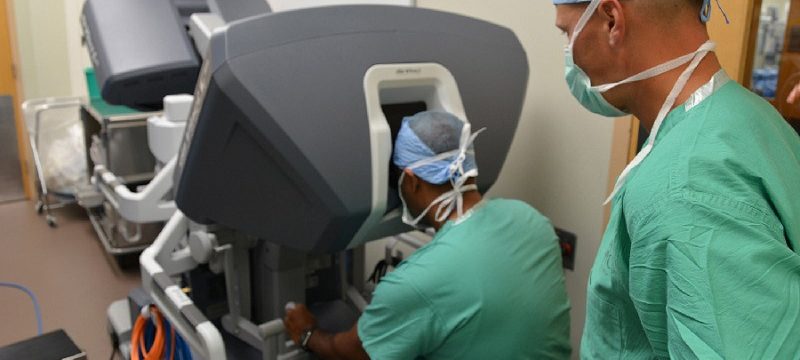The Surgical Robots of Today and the Future

The 21st century has seen us through a number of breakthroughs in the field of medical technology—and one particularly exciting development that’s gained traction as of late is robotic surgery. Robotic surgery is a form of minimally invasive surgery, which entails that surgeons use miniature surgical instruments that can fit through a series of quarter-inch incisions, as opposed to larger ones. One of the first instances of when minimally invasive surgery came into play was in the first laparoscopic cholecystectomy done in 1987, a procedure in which the gall bladder of a patient was removed through a few small cuts instead of a large one.
In the last twenty years, there have been more progress in the field of applying specially designed robots in the service of minimally invasive surgery. At first glance, the idea of surgical robots may seem rather futuristic. But truth be told, the field of robotics has advanced at a speed that robots can now effectively supplement the practical expertise of modern surgeons—meaning that the technology has evolved pretty fast, and we may well be on our way to seeing it blossom in the mainstream.
If you’re curious about what robotic surgery is capable of, what the technology looks like today, and what possibilities lie in store for it in the future, here’s a quick and interesting briefer.
Surgical Robots and Key Advancements in Minimally Invasive Surgery
In essence, a surgical robot does not perform the surgery itself, but works in direct support of the surgeon. In the case of the da Vinci Si Surgical System, or what is currently touted as the world’s most powerful and advanced surgery robot, miniaturized surgical instruments are mounted on three separate robotic arms. A fourth arm is equipped with a magnified high-definition 3D camera to give the surgeon a close and defined view of the operating site. The miniaturized instruments and the camera make up a console system that the surgeon can operate by using just his or her fingers, and each of these movements from the master controls can be replicated by the surgical robot.
Surgical robots basically help surgeons by providing unprecedented visualization and by enhancing their practical capabilities through precision handling of instruments. Naturally, the surgical robots themselves rely on superior engineering and top-notch motion control to be able to perform their job well. For instance, the high-quality brush and brushless DC motors in surgical robots make precise positioning possible while also providing other necessary features like high speed, high torque, and reusability.
With this kind of technology, both surgeons and patients reap the benefits. On the part of the surgeon, the surgical robot is capable of perfectly aligning with the surgeon’s movements and repeating them as needed, thus increasing accuracy and decreasing surgeon fatigue. The robots also enable a high amount of control even during complex and exhaustive minimally invasive surgeries. The risks of open surgery are also mitigated for patients, and having access to medical technology of this level heightens the benefits from minimally invasive surgery: less scarring, less trauma on the body, less risk of infection, quicker recovery time, and less time spent in confinement.
Robotic Surgery: Present-Day Applications
In the study “Robotic Surgery: A Current Perspective,” Lanfranco, Castellanos, Desai, and Meyers cited: “The motivation to develop surgical robots is rooted in the desire to overcome the limitations of current laparoscopic technologies and to expand the benefits of minimally invasive surgery.From their inception, surgical robots have been envisioned to extend the capabilities of human surgeons beyond the limits of conventional laparoscopy” (Annals of Surgery Jan 2004, 239[1]: 14-21).
As of 2018, robotic surgery is still considered a relatively novel technology, but some of the newest studies on it include R. Terra et al’s assessment for the safety and effectiveness of a robotic approach for anatomical lung resection (a minimally invasive thoracic surgery); Poon et al’s discussions of currently available robotic systems for transoral head and neck surgery; and Stewart et al’s findings that robotic surgery is on the rise in the United States for minimally invasive on cological procedures.
The greatest obstacle to the further mainstream adoption of surgical robots in minimally invasive surgery is the hefty price tag attached to such systems, easily in the range of millions of dollars. The price for such surgical procedures is, of course, driven by the demands of the market, although robotic surgeries typically cost upwards of $6,000. But there’s no doubt that the field of robotic surgery could grow in its practical applications—and with the rate of development ongoing, it’s fair to say that the benefits of this technology will become more accessible to patients of the near future.
Subscribe & Get E-Mail Updates Delivered
Our informative Design related articles featuring the latest Resources for Web Designers & the Web get delivered via email dialy. Thousands of readers have signed up already. Why don't you subscribe as well, and get articles delivered to your inbox?





Leave a Reply